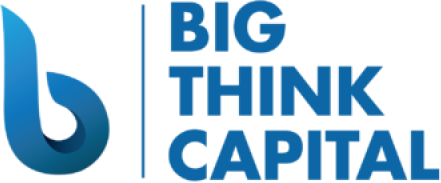Unlocking Business Growth Through Smart Financial Practices
Estimated Reading Time: 7 minutes
- Prioritize working capital optimization to ensure liquidity and operational efficiency.
- Understand SBA loan requirements and prepare your application in advance.
- Stay informed on economic trends and their implications for financing.
Table of Contents
- Understanding the Importance of Working Capital Management
- Different Techniques to Optimize Working Capital
- Exploring SBA Loan Requirements and Their Impact on Small Businesses
- How to Prepare Your Business to Meet SBA Loan Requirements
- Implications of Recent Fed Interest-Rate Decisions on Small Business Financing
- Practical Takeaways for Business Owners Exploring Financing
- Final Thoughts
- FAQ
Understanding the Importance of Working Capital Management
Working capital represents the difference between a company’s current assets and current liabilities. Proper management of this capital is crucial for various reasons:
- Operational Efficiency: Sufficient working capital ensures that businesses can meet daily operational expenses, such as paying employees, suppliers, and other immediate obligations without delay.
- Financial Flexibility: Effective working capital management provides businesses with the ability to respond to unforeseen circumstances, ensure smooth operations, and seize opportunities for growth.
- Creditworthiness: Lenders closely examine a business’s working capital to determine its financial health and ability to repay debts. A well-managed working capital position can lead to better borrowing terms.
- Sustainability: Ensuring adequate cash flow contributes to long-term sustainability and strategic decision-making.
In the dynamic small business ecosystem of 2025, understanding and optimizing working capital can mean the difference between thriving and merely surviving.
Different Techniques to Optimize Working Capital
Optimizing working capital is not a one-size-fits-all solution. Here are several techniques tailored for small business owners:
- Inventory Management: Adopt a just-in-time inventory approach to reduce holding costs. Leverage technology to forecast demand accurately, ensuring you stock only what is necessary.
- Streamlined Accounts Receivable: Set clear payment terms and incentivize early payments. Regularly follow up on outstanding invoices and consider offering discounts for prompt payments to improve cash flow.
- Supplier Negotiations: Foster strong relationships with suppliers to negotiate better payment terms. Extended payment cycles can allow for better cash flow management and liquidity.
- Cash Flow Forecasting: Utilize tools to project cash flow effectively. An accurate forecast gives insight into expected income and expenses, helping you identify potential shortfalls and plan accordingly.
- Reduce Overhead Costs: Review your operational costs and identify areas for reduction, such as renegotiating lease agreements or moving to cloud-based solutions that lower IT expenses.
By actively engaging in these practices, small businesses can optimize their working capital, enabling them to invest in growth opportunities, such as marketing or expansion.
Exploring SBA Loan Requirements and Their Impact on Small Businesses
SBA loans are a vital financing option for many small business owners looking to fund their ventures. As we enter 2025, understanding the up-to-date requirements for these loans is crucial for securing funding.
- Eligibility Criteria: To qualify for an SBA loan, businesses must meet specific eligibility criteria, such as being a for-profit business, operating in the United States, and meeting size standards defined by the SBA. Generally, these size standards are expressed in terms of revenue or number of employees.
- Creditworthiness: A good credit score is typically a prerequisite for SBA loans. The SBA generally expects a minimum credit score of around 650, though higher scores can lead to better terms.
- Business Plan: A strong, comprehensive business plan showcasing your business’s financial projections and goals is essential when applying for an SBA loan. This demonstrates to lenders that you have a clear roadmap for growth.
- Collateral: SBA loans often require collateral to secure the loan. Business owners should assess what assets can be used as collateral effectively.
- Personal Guarantees: In most cases, business owners are asked to provide a personal guarantee, indicating their commitment to repay the loan, regardless of the business’s success.
Navigating SBA loan requirements may seem daunting. However, the benefits of securing these loans—such as lower interest rates and longer repayment terms—significantly outweigh the initial complexities involved.
How to Prepare Your Business to Meet SBA Loan Requirements
Successfully securing an SBA loan involves careful preparation and attention to detail. Here are several steps to consider before embarking on your application process:
- Review Your Financial Statements: Ensure all financial statements, including income statements, balance sheets, and cash flow statements, are up to date and accurately reflect your business’s financial status.
- Enhance Your Creditworthiness: Work on improving your credit score by paying down existing debts or disputing inaccuracies in your credit report. Monitor your credit regularly to stay informed.
- Develop a Robust Business Plan: As mentioned, a comprehensive business plan is critical. Make sure it details your business model, market analysis, marketing strategy, and a detailed financial plan with projections for the next three to five years.
- Gather Necessary Documentation: Compile all required documentation, including tax returns, legal agreements, business licenses, and any other documents that verify your business’s operations.
- Consult a Financial Expert: Engaging with a financial expert or a funding strategist can provide tailored advice. At Big Think Capital, our team specializes in assisting small businesses to navigate financing needs effectively.
By adhering to these preparatory steps, small business owners can increase their chances of securing funding through SBA loans.
Implications of Recent Fed Interest-Rate Decisions on Small Business Financing
Understanding the wider economic landscape, particularly the Federal Reserve’s interest rate decisions, is crucial for business owners in 2025. Recent trends indicate a shift towards higher interest rates primarily to combat inflation. Here’s how it impacts small business financing:
- Increased Borrowing Costs: Higher interest rates mean increased costs for loans. This will likely affect SBA loans, merchant cash advances, and business lines of credit. As businesses plan for financing, the cost of capital should factor into decision-making.
- Investment Risk Assessment: Companies may take a more cautious approach to investments, focusing on those with quick returns to offset higher borrowing costs.
- Cash Flow Considerations: Business owners should closely monitor cash flow management. Adjusting pricing strategies and reducing discretionary spending can buffer against rising financing costs.
- Investment in Working Capital: In light of rising rates, having adequate working capital becomes even more essential. Businesses are encouraged to optimize their working capital management proactively.
- Future Funding Strategies: Owners should consider a diversified approach to funding and consider alternative financing options, such as equipment financing, which may offer more stability compared to high-interest loans.
Practical Takeaways for Business Owners Exploring Financing
As small business owners assess their financing strategies, here are three crucial insights to consider:
- Prioritize Working Capital Optimization: Engage actively in working capital management techniques to ensure liquidity and operational efficiency.
- Do Your Homework on SBA Loans: Understand the requirements and take steps to prepare your application in advance, ensuring your business is ready to present financial viability.
- Stay Informed on Economic Trends: Keep an eye on interest rate trends and their implications for financing. Adapt your strategies accordingly to minimize risks associated with rising costs.
Final Thoughts
Smart financial practices are crucial for unlocking business growth in the challenging economic landscape of 2025. By focusing on working capital optimization and understanding the intricacies of SBA loan requirements, small businesses can position themselves for success. It requires diligence, preparation, and sometimes expert advice, but the payoff can be significant.
At Big Think Capital, we are committed to empowering small businesses with the financial knowledge and resources they need to thrive. If you want to learn more about optimizing your working capital or need assistance navigating funding options like SBA loans, visit us at bigthinkcapital.com or speak with one of our funding experts today. Your growth journey begins with informed financial decisions.
FAQ
- What is working capital management?
- How can I improve my credit score for an SBA loan?
- What are the recent trends in SBA loan interest rates?
What is working capital management?
Working capital management refers to the administration of a company’s current assets and liabilities to ensure it maintains sufficient cash flow to meet its short-term obligations. This includes managing inventory levels, accounts receivable, and accounts payable efficiently.
How can I improve my credit score for an SBA loan?
To improve your credit score, you should focus on paying down existing debts, disputing inaccuracies on your credit report, and making timely payments. Regularly monitoring your credit can also help you understand your standing and take corrective actions when necessary.
What are the recent trends in SBA loan interest rates?
Recent trends indicate an increase in SBA loan interest rates as the Federal Reserve adjusts rates to combat inflation. Higher interest rates lead to increased borrowing costs for businesses, making it important for owners to carefully consider their funding strategies.






